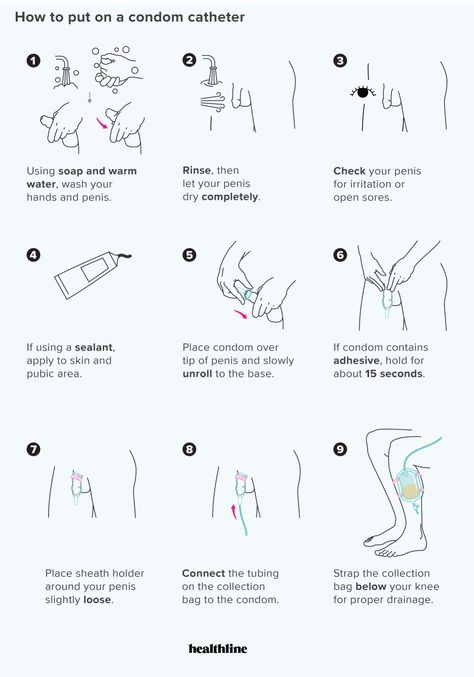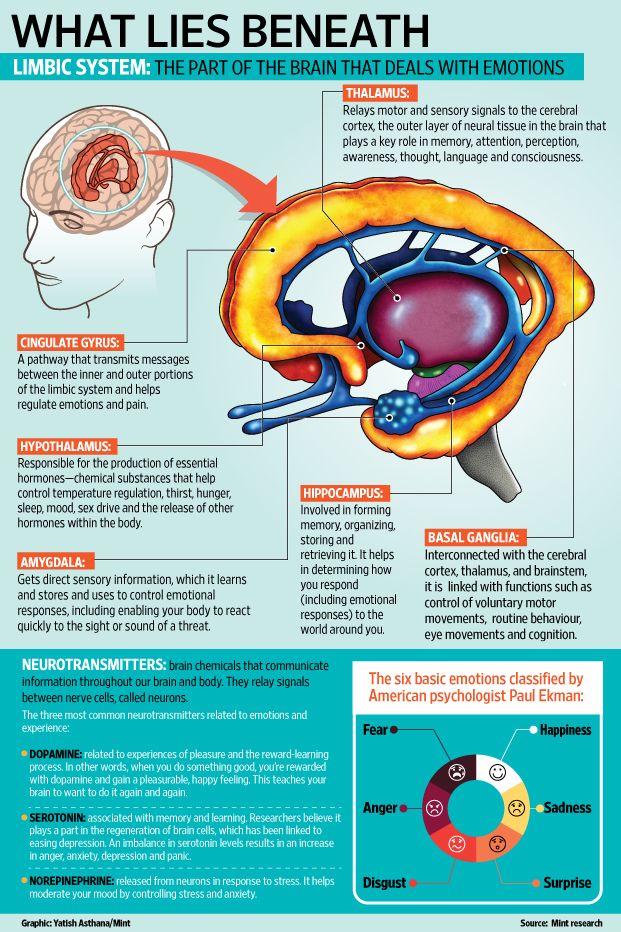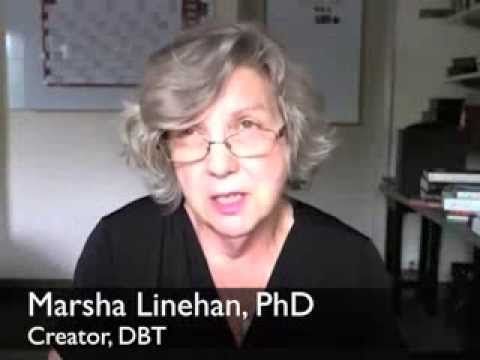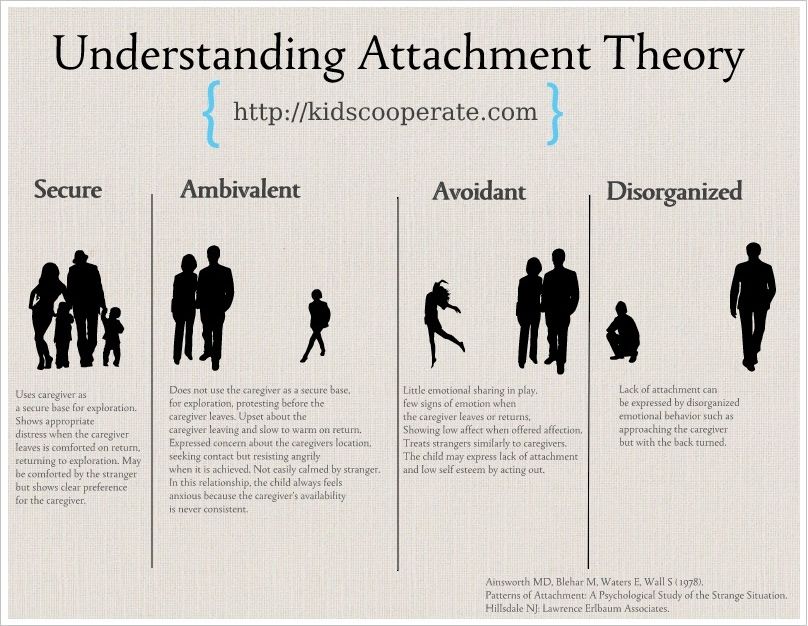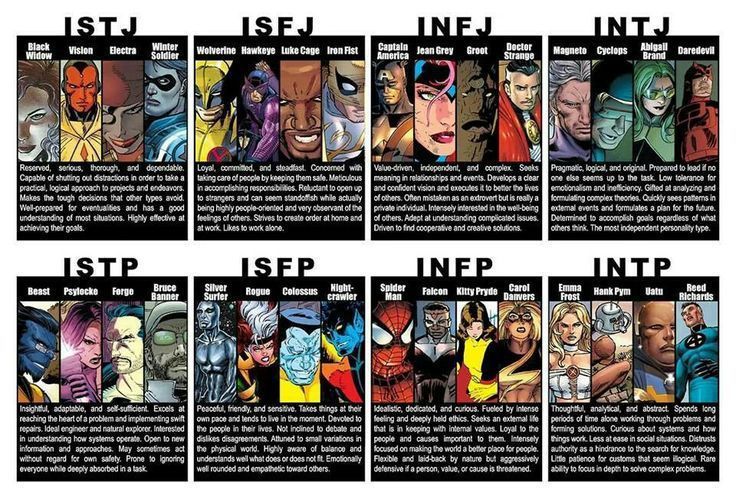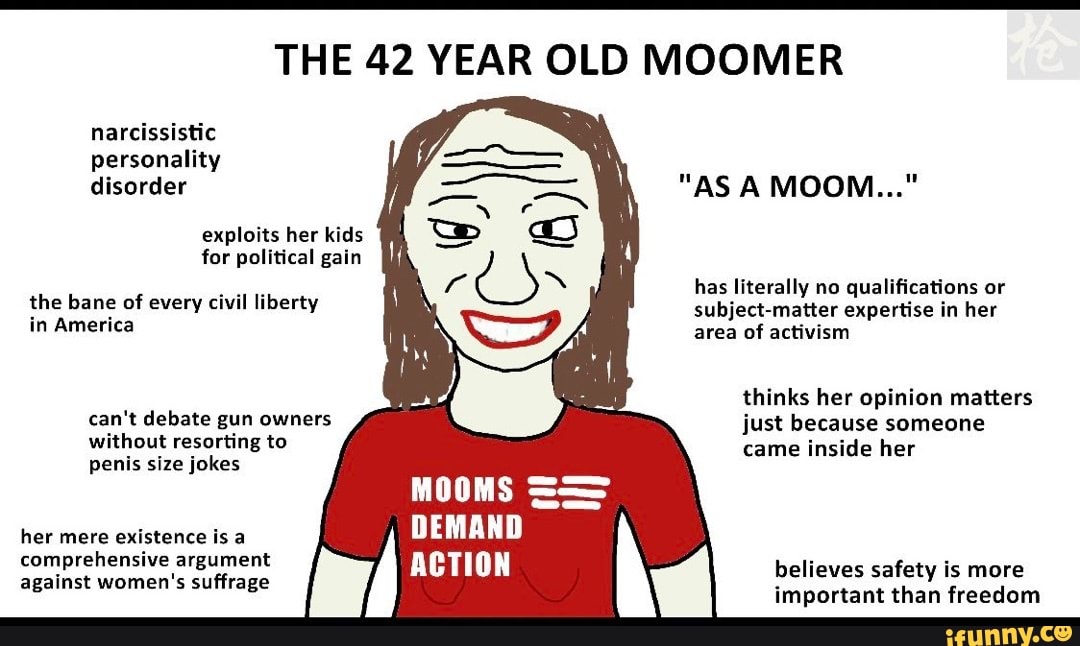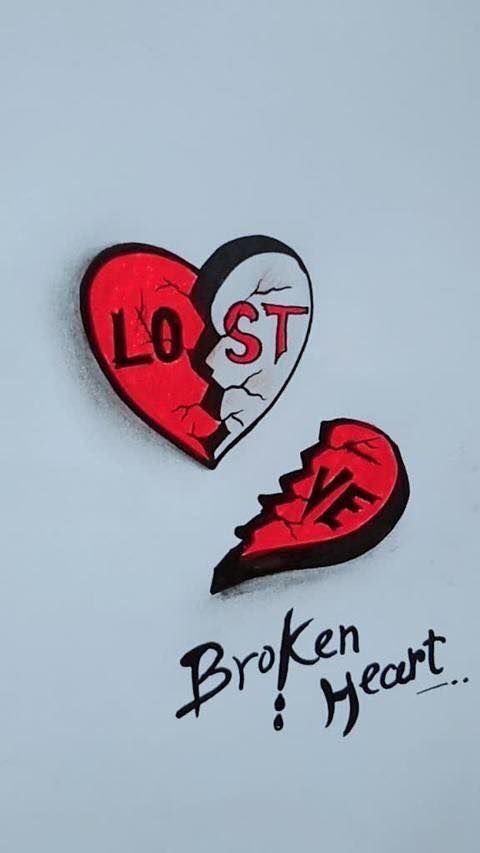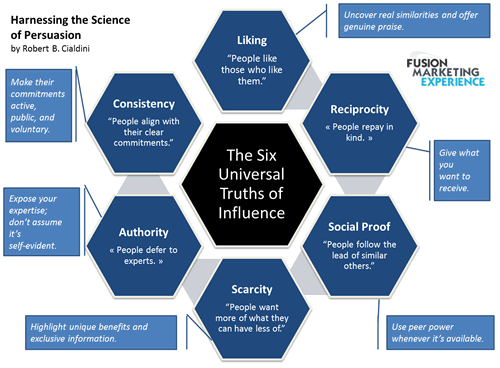Criteria for mania
Table 11, DSM-IV to DSM-5 Manic Episode Criteria Comparison - DSM-5 Changes
Table 11DSM-IV to DSM-5 Manic Episode Criteria Comparison
| DSM-IV Criteria | DSM-5 Criteria |
|---|---|
| Name: Bipolar I Disorder Single Manic Episode | Name: Bipolar I Disorder Manic Episode |
| Class: Bipolar Disorders | Class: Bipolar and Related Disorders |
| A. A distinct period of abnormally and persistently elevated, expansive, or irritable mood, lasting at least 1 week (or any duration if hospitalization is necessary). | A. A distinct period of abnormally and persistently elevated, expansive, or irritable mood and abnormally and persistently goal-directed behavior or energy, lasting at least 1 week and present most of the day, nearly every day (or any duration if hospitalization is necessary). |
| B. During the period of mood disturbance, three (or more) of the following symptoms have persisted (four if the mood is only irritable) and have been present to a significant degree: | B. During the period of mood disturbance and increased energy or activity, three (or more) of the following symptoms have persisted (four if the mood is only irritable) are present to a significant degree and represent a noticeable change from usual behavior: |
| 1. Inflated self-esteem or grandiosity | 1. Same |
| 2. Decreased need for sleep (e.g., feels rested after only 3 hours of sleep) | 2. Same |
3.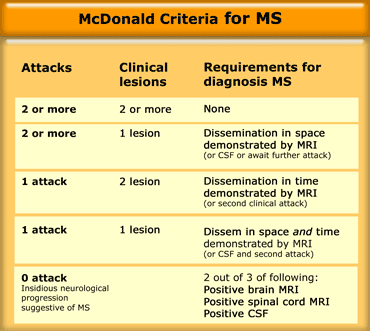 More talkative than usual or pressure to keep talking More talkative than usual or pressure to keep talking | 3. Same |
| 4. Flight of ideas or subjective experience that thoughts are racing | 4. Same |
| 5. Distractibility (i.e., attention too easily drawn to unimportant or irrelevant external stimuli) | 5. Distractibility (i.e., attention too easily drawn to unimportant or irrelevant external stimuli), as reported or observed.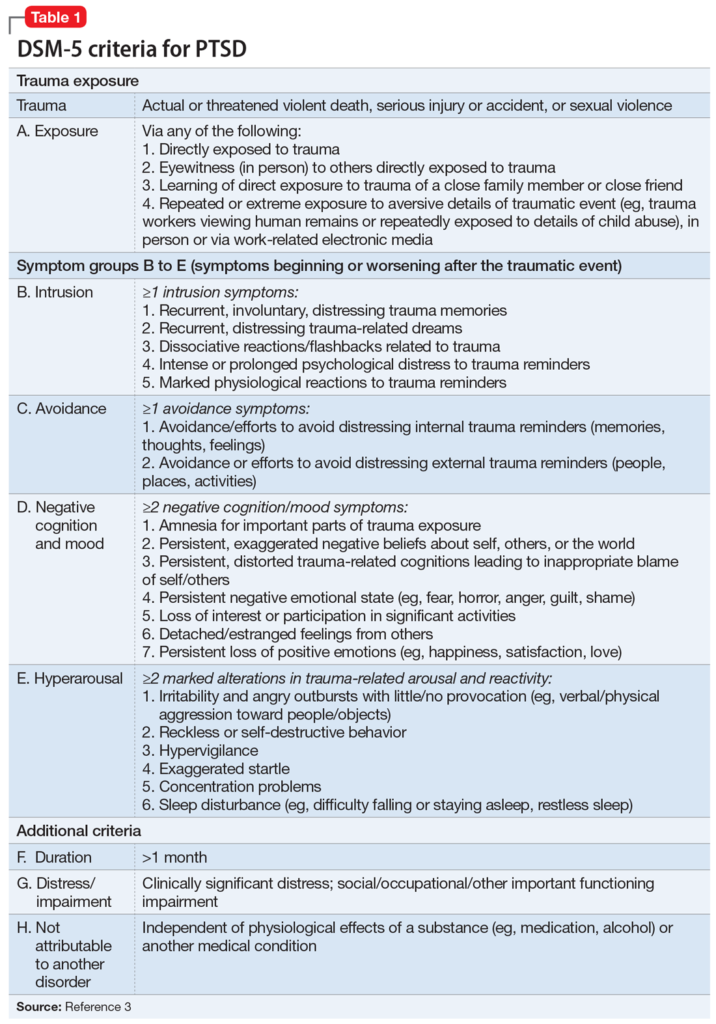 |
| 6. Increase in goal-directed activity (either socially, at work or school, or sexually) or psychomotor agitation | 6. Same |
| 7. Excessive involvement in pleasurable activities that have a high potential for painful consequences (e.g., engaging in unrestrained buying sprees, sexual indiscretions, or foolish business investments) | 7. Excessive involvement in activities that have a high potential for painful consequences (e.g., engaging in unrestrained buying sprees, sexual indiscretions, or foolish business investments). |
| C. The symptoms do not meet criteria for a mixed episode. | Dropped |
| D. The mood disturbance is sufficiently severe to cause marked impairment in occupational functioning or in usual social activities or relationships with others, or to necessitate hospitalization to prevent harm to self or others, or there are psychotic features. | C.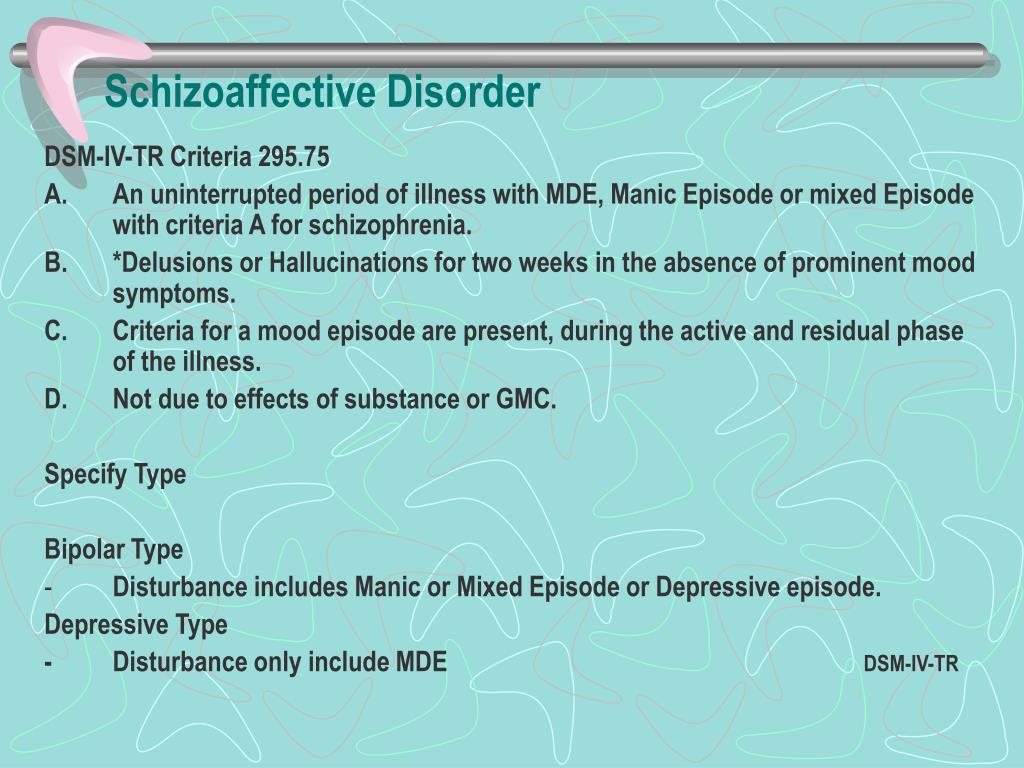 The mood disturbance is sufficiently severe to cause marked impairment in social or occupational functioning or to necessitate hospitalization to prevent harm to self or others, or there are psychotic features. The mood disturbance is sufficiently severe to cause marked impairment in social or occupational functioning or to necessitate hospitalization to prevent harm to self or others, or there are psychotic features. |
| E. The symptoms are not due to the direct physiological effects of a substance (e.g., a drug of abuse, a medication, or other treatment) or a general medical condition (e.g., hyperthyroidism). Note: Manic-like episodes that are clearly caused by somatic antidepressant treatment (e.g., medication, electroconvulsive therapy, light therapy) should not count toward a diagnosis of bipolar I disorder. | D. The episode is not attributable to the direct physiological effects of a substance (e.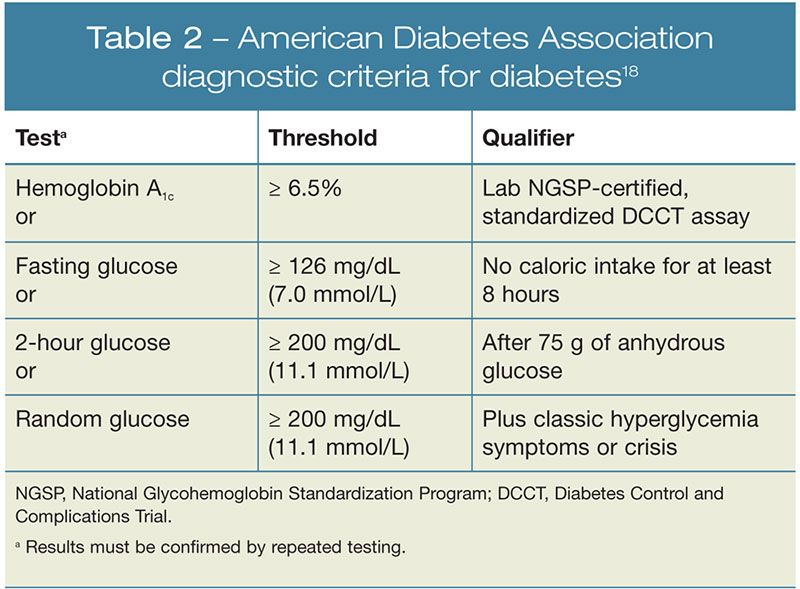 g., a drug of abuse, a medication, or other treatment) or another medical condition. g., a drug of abuse, a medication, or other treatment) or another medical condition.Note: A full manic episode that emerges during antidepressant treatment (e.g., medication, electroconvulsive therapy) but persists at fully syndromal level beyond the physiological effect of that treatment is sufficient evidence for a manic episode and therefore a bipolar I diagnosis. |
Bipolar Definition and DSM-5 Diagnostic Criteria
What is Bipolar Disorder?
Bipolar disorders are described by the American Psychiatric Association’s Diagnostic and Statistical Manual of Mental Disorders (DSM-5) as a group of brain disorders that cause extreme fluctuation in a person’s mood, energy, and ability to function.
Bipolar disorder is a category that includes three different condition--bipolar I, bipolar II, and cyclothymic disorder.
Bipolar I disorder is a manic-depressive disorder that can exist both with and without psychotic episodes
Bipolar II disorder consists of depressive and manic episodes which alternate and are typically less severe and do not inhibit function
Cyclothymic disorder is a cyclic disorder that causes brief episodes of hypomania and depression
Bipolar and related disorders are given a chapter of their own in the DSM-5, between depressive disorders and schizophrenia spectrum disorders. People who live with bipolar disorder experience periods of great excitement, overactivity, delusions, and euphoria (known as mania) and other periods of feeling sad and hopeless (known as depression). As such, the use of the word bipolar reflects this fluctuation between extreme highs and extreme lows. The diagnosis is frequently assigned to young patients presenting with a (first) major depressive episode. In these cases, diagnosis is exclusively based on psychiatric history provided by family and caregivers, not on the current psychopathological assessment by the psychiatrist.
People who live with bipolar disorder experience periods of great excitement, overactivity, delusions, and euphoria (known as mania) and other periods of feeling sad and hopeless (known as depression). As such, the use of the word bipolar reflects this fluctuation between extreme highs and extreme lows. The diagnosis is frequently assigned to young patients presenting with a (first) major depressive episode. In these cases, diagnosis is exclusively based on psychiatric history provided by family and caregivers, not on the current psychopathological assessment by the psychiatrist.
Bipolar disorder occurs in up to 2.5% of the population, but the prevalence is much higher among first-degree relatives of individuals with bipolar or schizophrenia disorder. Individuals with bipolar disorder experience mood swings that are less severe in intensity. During what is known as a hypomanic episode, a person may experience elevated mood, increased self-esteem, and a decreased need for sleep. Unlike a manic episode, these symptoms are not so severe as to impact daily functioning or cause psychotic symptoms.
Unlike a manic episode, these symptoms are not so severe as to impact daily functioning or cause psychotic symptoms.
What’s more, in some cases, a bipolar episode can include symptoms of both mania and depression; this is what’s known as an episode with mixed features. People experiencing an episode with mixed features may feel extreme sadness, guilt, and worthlessness, while at the same experiencing high energy, racing thoughts and speech, and overactivity. It is not uncommon during a mixed episode for a person to go from being exuberantly happy to be expressing suicidal thoughts in a matter of moments.
Bipolar Disorder DSM-5 Diagnostic Criteria
Talking with a doctor or mental health professional is the first step in identifying bipolar disorder. Firstly, a doctor may perform a physical evaluation to rule out any other conditions that may be causing symptoms. If no other illnesses are present, the doctor will conduct a comprehensive mental health evaluation to assess the patient’s symptoms in accordance with the specific criteria from the American Psychiatric Association’s Diagnostic and Statistical Manual of Mental Disorders (DSM-5).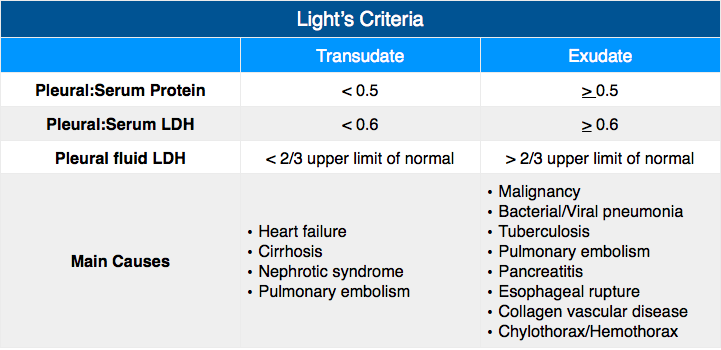 To be diagnosed with bipolar disorder, a person must have experienced at least one episode of mania or hypomania.
To be diagnosed with bipolar disorder, a person must have experienced at least one episode of mania or hypomania.
To be considered mania, the elevated, expansive, or irritable mood must last for at least one week and be present most of the day, nearly every day. To be considered hypomania, the mood must last at least four consecutive days and be present most of the day, almost every day.
During this period, three or more of the following symptoms must be present and represent a significant change from usual behavior:
Inflated self-esteem or grandiosity
Decreased need for sleep
Increased talkativeness
Racing thoughts
Distracted easily
Increase in goal-directed activity or psychomotor agitation
Engaging in activities that hold the potential for painful consequences, e.g., unrestrained buying sprees
The depressive side of bipolar disorder is characterized by a major depressive episode resulting in depressed mood or loss of interest or pleasure in life.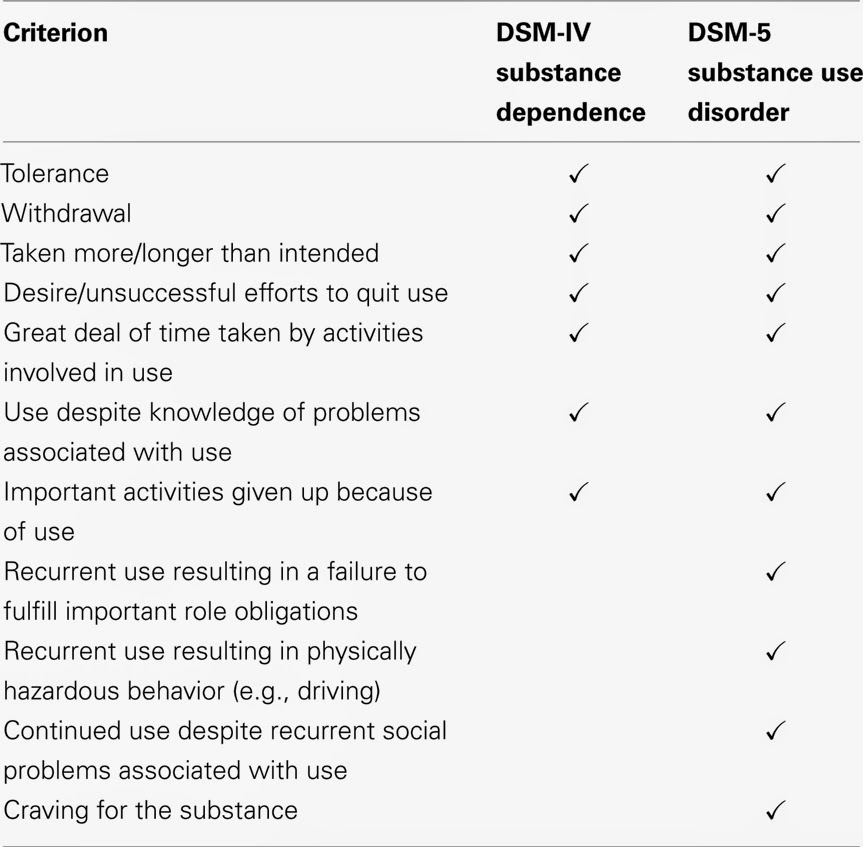 The DSM-5 states that a person must experience five or more of the following symptoms in two weeks to be diagnosed with a major depressive episode:
The DSM-5 states that a person must experience five or more of the following symptoms in two weeks to be diagnosed with a major depressive episode:
Depressed mood most of the day, nearly every day
Loss of interest or pleasure in all, or almost all, activities
Significant weight loss or decrease or increase in appetite
Engaging in purposeless movements, such as pacing the room
Fatigue or loss of energy
Feelings of worthlessness or guilt
Diminished ability to think or concentrate, or indecisiveness
Recurrent thoughts of death, recurrent suicidal ideation without a specific plan, or a suicide attempt
Could My Mood Swings Be Bipolar Disorder?
We all have good and bad days –sometimes we feel on top of the world and other days, if we lose a job, go through a bad break-up, or fall out with a friend, we may be down in the dumps. But have you ever gone to bed one night feeling euphoric and woken up the next morning to find you feel empty and hopeless? Have you ever noticed your high-energy levels and racing thoughts suddenly turn to feelings of worthlessness and an inability to experience pleasure doing the same things you once enjoyed? If not, it’s unlikely that you have bipolar disorder.
Several important features of bipolar disorder allow us to distinguish between the severe mental condition and the occasional mood swing. The first feature is whether the fluctuations in mood are caused by a situation, person, or event, or appear without cause. While the moods of people with bipolar disorder can be affected by situational variables, people with bipolar disorder also frequently become manic or depressed for no apparent reason. In comparison, for most people, moodiness is tied to a situational event, particularly stressful period, or even hormonal changes in the body.
The duration and intensity of high and low moods are also factors to consider when making a judgment on whether you should be concerned about bipolar disorder. Individuals with bipolar experience an elevated or irritable mood for at least four consecutive days, while their depressive episodes last for at least two weeks at a time. If you’re struggling with moodiness, the intensity of the moods you are experiencing is likely significantly higher on the intensity scale than those of people with bipolar disorder.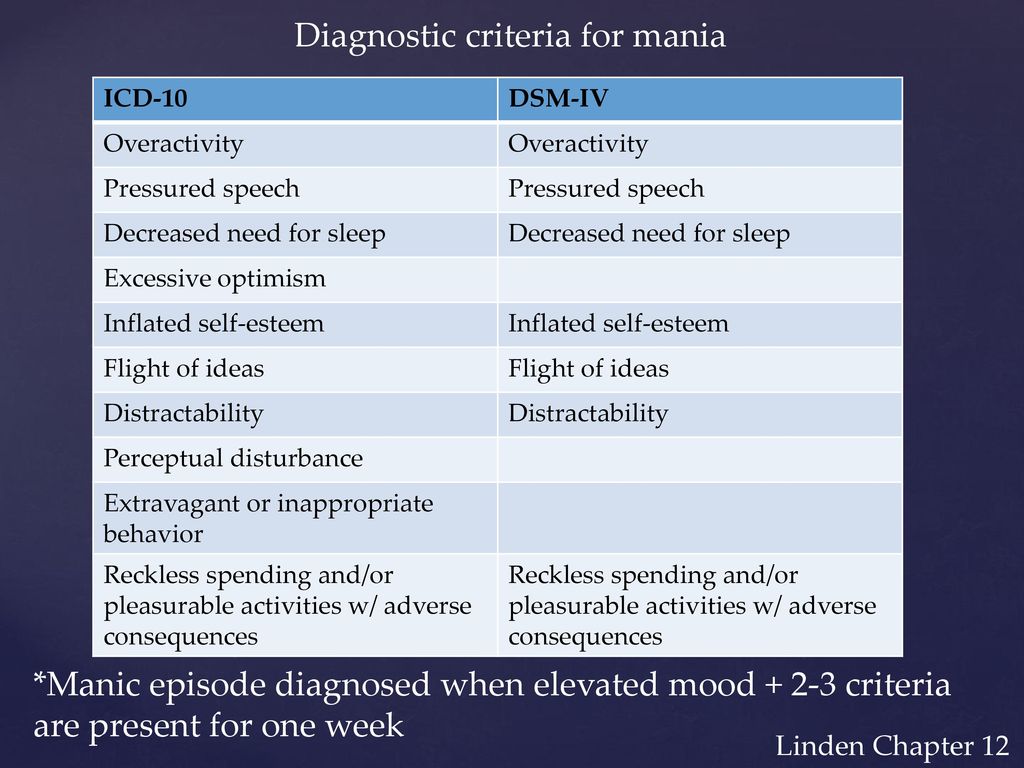
If you’re unsure about whether your mood swings are normal or could be symptomatic of bipolar disorder. You may want to start a mood diary using an app such as "Daylio" to help keep track and monitor your mood fluctuations. Psychologists and therapists suggest that this can be a therapeutic activity. It can also help you to determine whether events or situations in your life cause your mood swings or if they appear seemingly without cause.
If you are concerned about bipolar disorder, we encourage you to make an appointment with your doctor or mental health professional to discuss the specific details of your fluctuating mood.
- American Psychiatric Association. Diagnostic and Statistical Manual of Mental Disorders. 5th Edition. Arlington, VA: American Psychiatric Association; 2013.
Notes: This article was originally published October 13, 2019 and most recently updated September 29, 2020.
Bipolar affective disorder (BAD) | Clinical Center "Psychiatry-Narcology"
According to ICD 10, which is currently used by doctors in the Republic of Belarus, bipolar disorder is defined as a disorder characterized by two or more episodes in which the patient's mood and activity level are significantly impaired.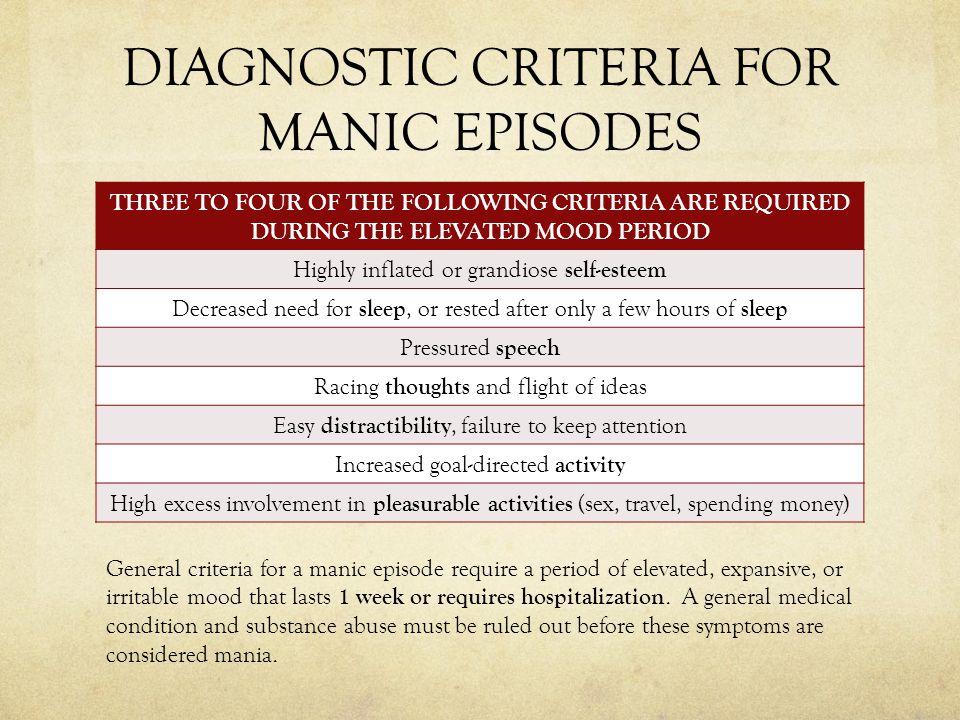 These disturbances are cases of elevation of mood, a surge of energy and increased activity (hypomania or mania) and cases of a drop in mood and a sharp decrease in energy and activity (depression). nine0003
These disturbances are cases of elevation of mood, a surge of energy and increased activity (hypomania or mania) and cases of a drop in mood and a sharp decrease in energy and activity (depression). nine0003
The symptoms of BAD depend on the type of disorder the person has, but all forms of BAD include periods of normal mood between episodes of flare-ups.
Type 1 BAD has at least one manic episode, which may be accompanied by symptoms of a depressive episode (most patients with type 1 BAD have also experienced depressive episodes).
In type 2 bipolar disorder, the patient experiences a severe depressive episode as well as episodes of hypomania (symptoms are less severe than those of mania), with periods of normal mood between these episodes. nine0003
In cyclothymia, a milder form of bipolar disorder, people experience less severe manic and depressive episodes that alternate for at least 2 years. These symptoms do not reach the criteria for hypomania or depression.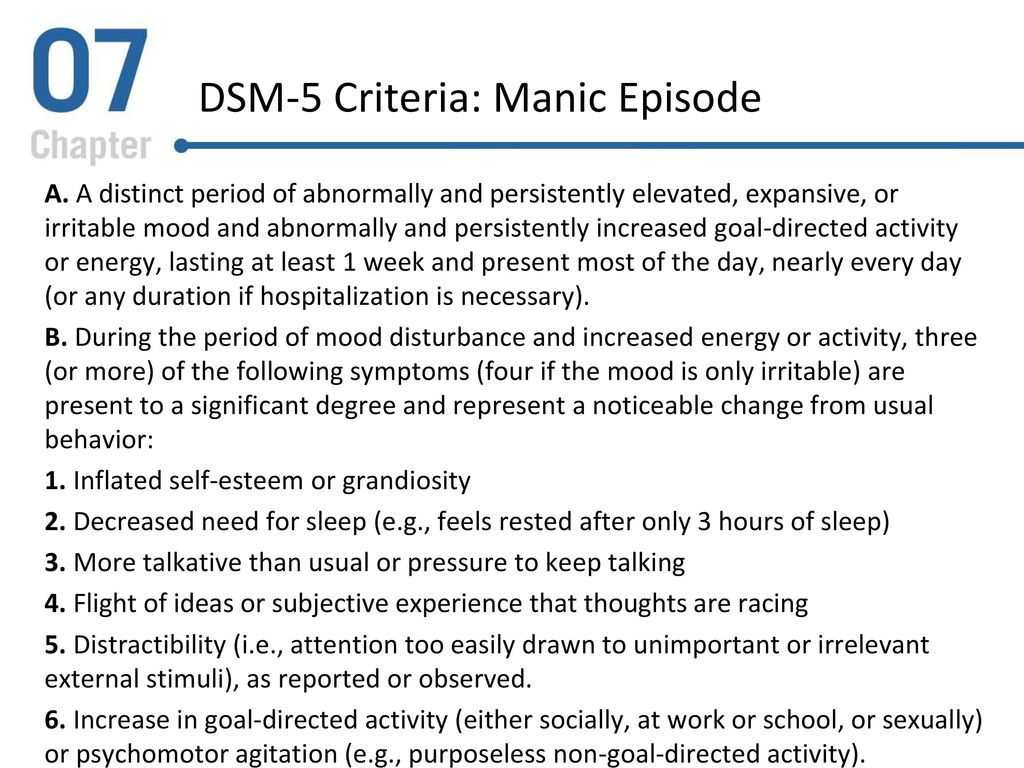
Manic and hypomanic episodes: what is the difference?
A manic episode is characterized by a state of abnormal or persistent high spirits, accompanied by increased activity or energy, lasting at least a week. A manic episode may also include periods of irritable mood. Both types of manic episodes are accompanied by the following symptoms:
- Distracted, easily distracted
- Feeling a swarm of thoughts in the head
- Increased self-esteem, up to a feeling of omnipotence
- Reduced need for sleep
- Increased talkativeness
- Impulsiveness, recklessness, easy involvement in risky situations without taking into account possible adverse consequences (eg. Spending large sums of money on unnecessary things, unprotected, risky sexual relationships).
In a manic episode (mania), in both cases, the symptoms are present for almost the entire day, every day.
In a hypomanic episode, the same symptoms occur, but they are less pronounced in intensity and duration.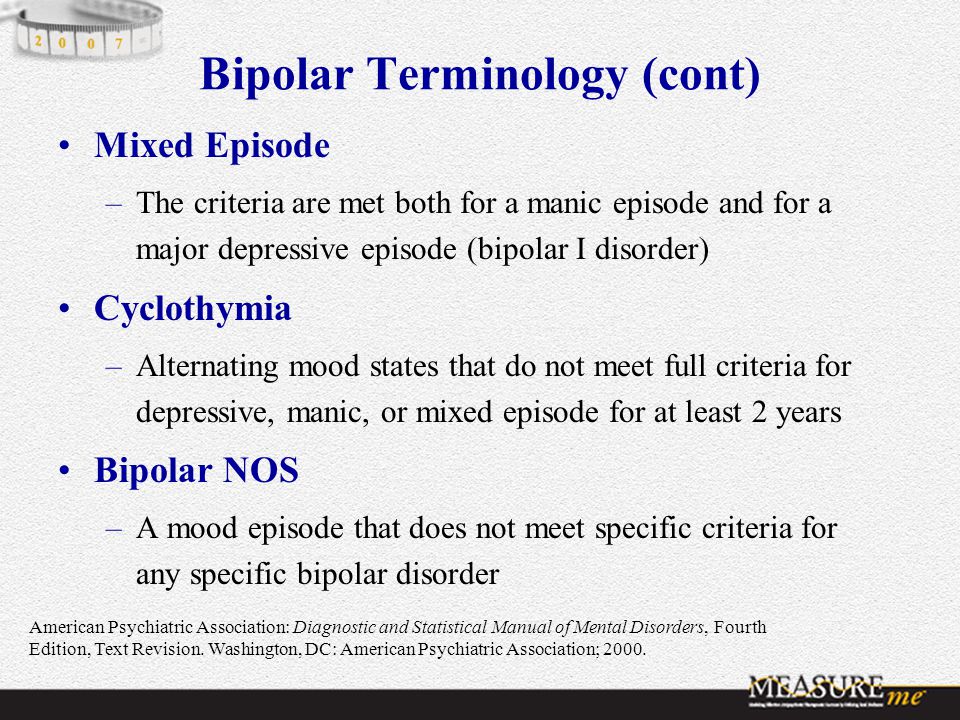 These episodes are shorter, lasting at least 4 days.
These episodes are shorter, lasting at least 4 days.
During a manic episode there are behavioral changes that must meet the following criteria:
- Changes in mood and functioning are marked and pronounced
- Habitual behavior is severely disturbed, sometimes requiring hospitalization to prevent harm to the patient and others
- These changes are not caused by alcohol, other drugs, drugs or other medical conditions.
A manic episode may cause a loss of touch with reality (psychosis) and may be accompanied by hallucinations and delusions. The presence of these psychotic symptoms can sometimes lead to a misdiagnosis of schizophrenia. nine0003
During a hypomanic episode there are changes in behavior that must meet the following criteria:
- There are changes in mood and functioning
- These changes are mild, which does not interfere with daily activities, does not require hospitalization
- These changes are not caused by the use of alcohol, other drugs, drugs or other medical conditions
- Not accompanied by psychotic symptoms! nine0020
Symptoms of a depressive episode
A depressive episode includes the following signs and symptoms:
- Depressed mood
- Lack of interest or joy in the usual daily activities and things
- Significant weight loss or gain, changes, usually loss of appetite
- Insomnia or excessive sleepiness
- Restless or slow behavior
- Weakness and loss of energy
- Feelings of worthlessness or guilt
- Inability to concentrate
- Thoughts of death or suicide.

To confirm a diagnosis of a depressive episode, a patient must have five or more of these symptoms daily or nearly every day—for most of the day—for at least two weeks.
Like a manic episode, a depressive episode must not be caused by alcohol or other drugs, drugs, or other medical conditions. nine0003
Other symptoms and conditions of bipolar disorder:
- Anxiety
- Manic episode with some depressive symptoms. conversely, a depressive episode with manic or hypomanic symptoms
- Feeling of emptiness or hopelessness
- Loss of pleasure in most or all activities
- Catatonia (condition accompanied by limited or abnormal movements in the limbs). People in catatonia do not react to the environment, they may be in unusual abnormal positions. Often they don't talk. nine0020
- Psychosis. Typically, people with psychosis experience a severe depressive or manic episode that leads to a loss of touch with reality.
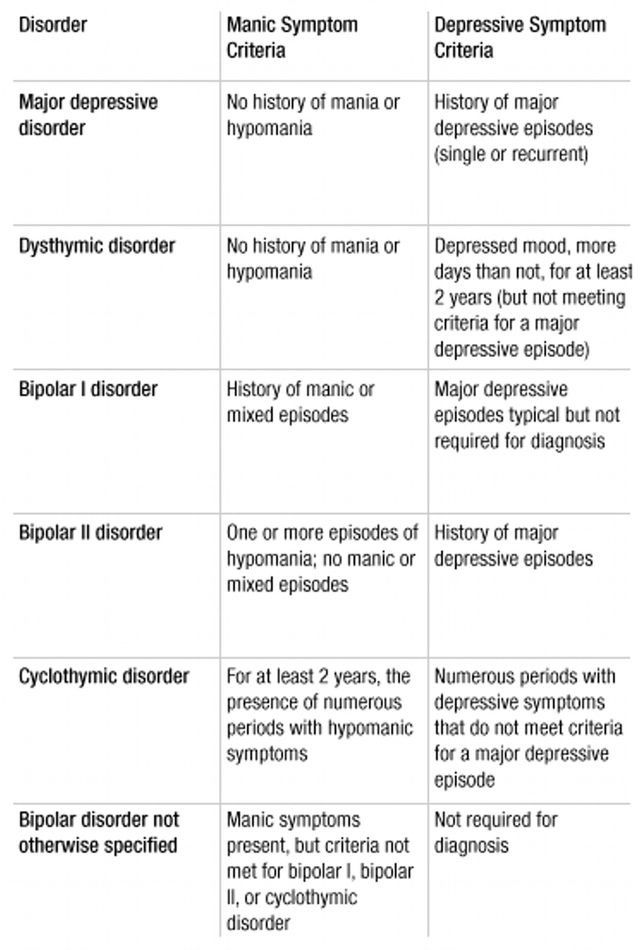 They may develop false, but very strong, beliefs (delusions) and hallucinations.
They may develop false, but very strong, beliefs (delusions) and hallucinations.
Bipolar disorder
"All change is a threat to stability" Aldous Huxley
DEFINITION
Bipolar disorder is a mental condition that causes extreme mood swings with emotional highs (mania or hypomania) and lows (depression) (Mayo Clinic). nine0108Prevalence of mental disorders in women
Ferrari A, et al. Bipolar Disorders. 2016;5:440–50.
CLASSIFICATION OF MOOD DISORDERS (ICD-10)
• Manic episode [F30].• Bipolar affective disorder [F31].
• Depressive episode [F32].
• Recurrent depressive disorder [F33].
• Chronic affective disorders [F34].
• Organic affective disorders [F06.3]. nine0121 • Other mental and behavioral disorders due to alcohol [F10.8].
Adaptation disorders [F43.2].
Prevalence of mental disorders in men
Ferrari A, et al. Bipolar Disorders. 2016;5:440–50.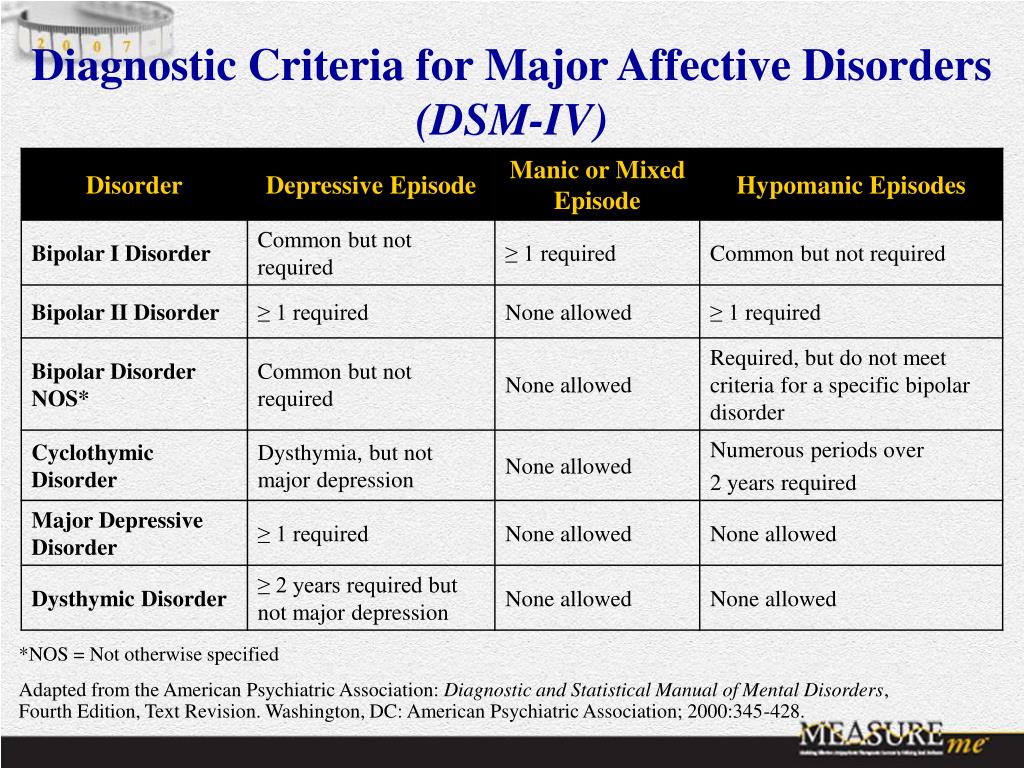
DIAGNOSTIC CRITERIA (ICD-10)
Hypomanic episodeA. Elevated or irritable mood that is clearly abnormal for the individual and persists for ≥4 consecutive days. nine0121 B. Must have ≥3 of the following and affect daily activities:
1. Increased activity or restlessness.
2. Increased talkativeness.
3. Difficulty concentrating or being distracted.
4. Reduced need for sleep.
5. Increasing sexual energy.
6. Minor carousing or other forms of reckless and irresponsible behaviour.
7. Increased sociability or familiarity. nine0121 B. The disorder does not meet the criteria for mania, bipolar disorder, depressive episode, cyclothymia, or anorexia nervosa.
D. Episode cannot be explained by substance use or any organic mental disorder.
Manic episode Diagnosis of bipolar disorder is established by present or past ≥2 episodes, at least one of which was hypomanic or manic.
A. Elevation or irritability that is clearly abnormal for the individual and persists for ≥1 week (unless severe enough to require hospitalization). nine0121 B. ≥3 of the following must be present (≥4 if mood is only irritable), leading to severe impairment of daily activities :
nine0121 B. ≥3 of the following must be present (≥4 if mood is only irritable), leading to severe impairment of daily activities :
1. Increased activity or restlessness.
2. Increased talkativeness.
3. Acceleration of the flow of thoughts or subjective feeling of a "leap of ideas".
4. Violation of normal social behavior with inadequate actions.
5. Reduced need for sleep. nine0121 6. Increased self-esteem or ideas of greatness.
7. Distractibility or constant change of activities and plans.
8. Reckless or reckless behavior, the consequences of which the patient is not aware of.
9. Noticeable increase in sexual energy or sexual promiscuity.
B. No hallucinations or delusions, although there may be perceptual disturbances.
D. Episode cannot be explained by substance use or any organic mental disorder. nine0003 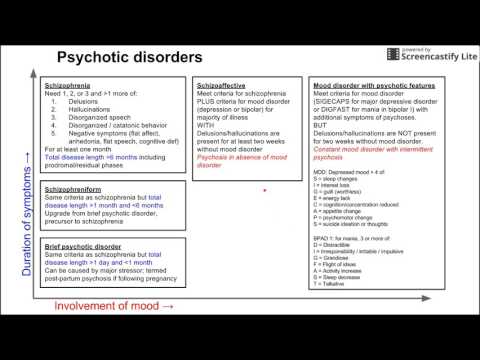
Learn more

